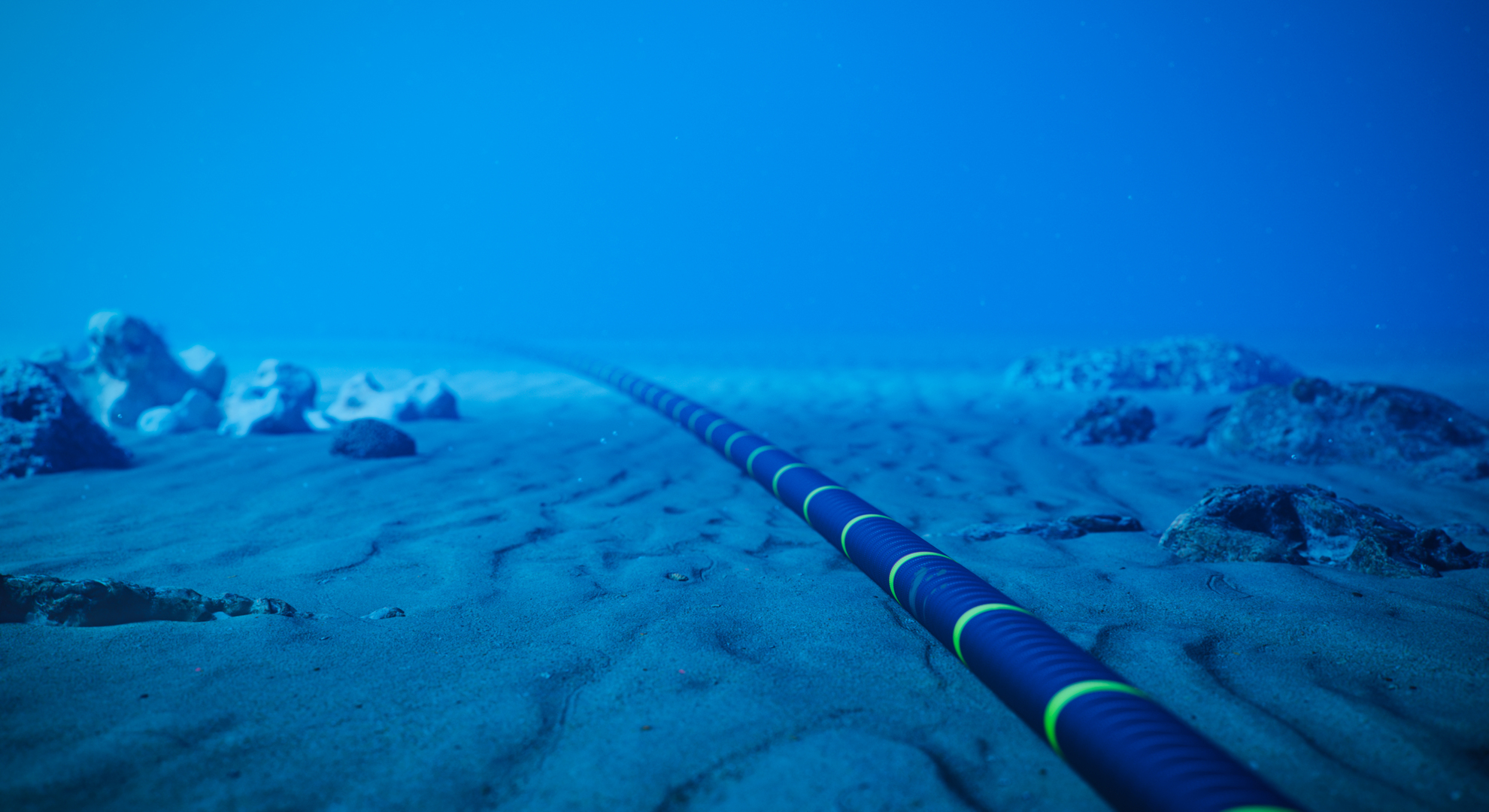
04 Jun The importance of submarine cables in data transmission
Most people are completely unaware of the infrastructure and hardware that allows them to access the Internet 24/7, work remotely from just about anywhere in the world, and spend hours scrolling through endless pictures of what their friends had for dinner… and that’s probably pretty normal, given most people never set eyes on this all-important technological equipment.
Despite this, ask a random person on the street how connectivity and communication works nowadays, and they’ll probably mention the likes of fibre optic technology and 5G. But submarine cables – absolutely essential to life as we know it, and key to much of the technology in our everyday lives – often remain totally overlooked.
The world’s most important underwater cables
What really sets submarine cables apart is their ability to extend fibre optic standard connectivity – FTTH – between continents, overcoming enormous distances as they snake along the ocean floor. Some of the most important underwater cables in the world are famous for two main reasons. Firstly, due to the sheer engineering triumph of connecting such vast distances with a single cable and, secondly, due to the geo-strategic importance of the areas that get to enjoy digital communication and connectivity because of them.
SEA-ME-WE 3, an optical submarine telecommunications cable, is the longest in the world, linking South-East Asia, the Middle East and Western Europe, as the initials in the name suggest. TAT-14 was a transatlantic cable, and one of the world’s most important, connecting the United States with Europe, while the Asia-Africa-Europe-1 cable (AAE-1) is another giant, connecting Asia, Africa and Europe. Taking one as an example, AAE-1 has been in service since 2017 and covers a total distance of approximately 25,000km, offering an initial performance – which has been steadily improving over the years – of 40 terabytes per second.
Spain links up to Africa thanks to an underwater cable
ACE, or the Africa Coast to Europe submarine cable system, is vitally important to the connectivity of both continents. It means digitalisation can now be used as a tool to promote African development, boosting the economic and business activity of many developing nations, including Ivory Coast, Ghana, Gabon and Angola, among others. On the European side of things, ACE has a connectivity point in Portugal, where it also links up to the transatlantic submarine cables.
Some interesting facts about underwater cables
To the uninitiated, it might seem like the biggest challenge facing underwater cable manufacturers is the sheer distances that need to be covered. Wrong. The most delicate tightrope they have to walk when laying these cables is withstanding the enormous pressure that you find on the floors of the oceans.
Despite this, cables are designed to have an extremely long service life, which becomes incredibly important when you think about just how difficult (and expensive!) it would be to pop down to the bottom of the Atlantic to fix a broken cable… And yet these kinds of tasks are sometimes necessary. Robots and remotely-operated equipment are used to deal with any issues, which require remarkable precision.
The strategic importance of submarine cables is so great that, in the majority of cases, facilities are protected and monitored by military forces and other state security services. Governments almost always work closely with private companies to invest in commissioning these types of assets. An attack by a foreign power on an underwater cable could result in an Internet blackout in a number of different countries, so they’re considered high-level protected assets for the military and the intelligence agencies.

